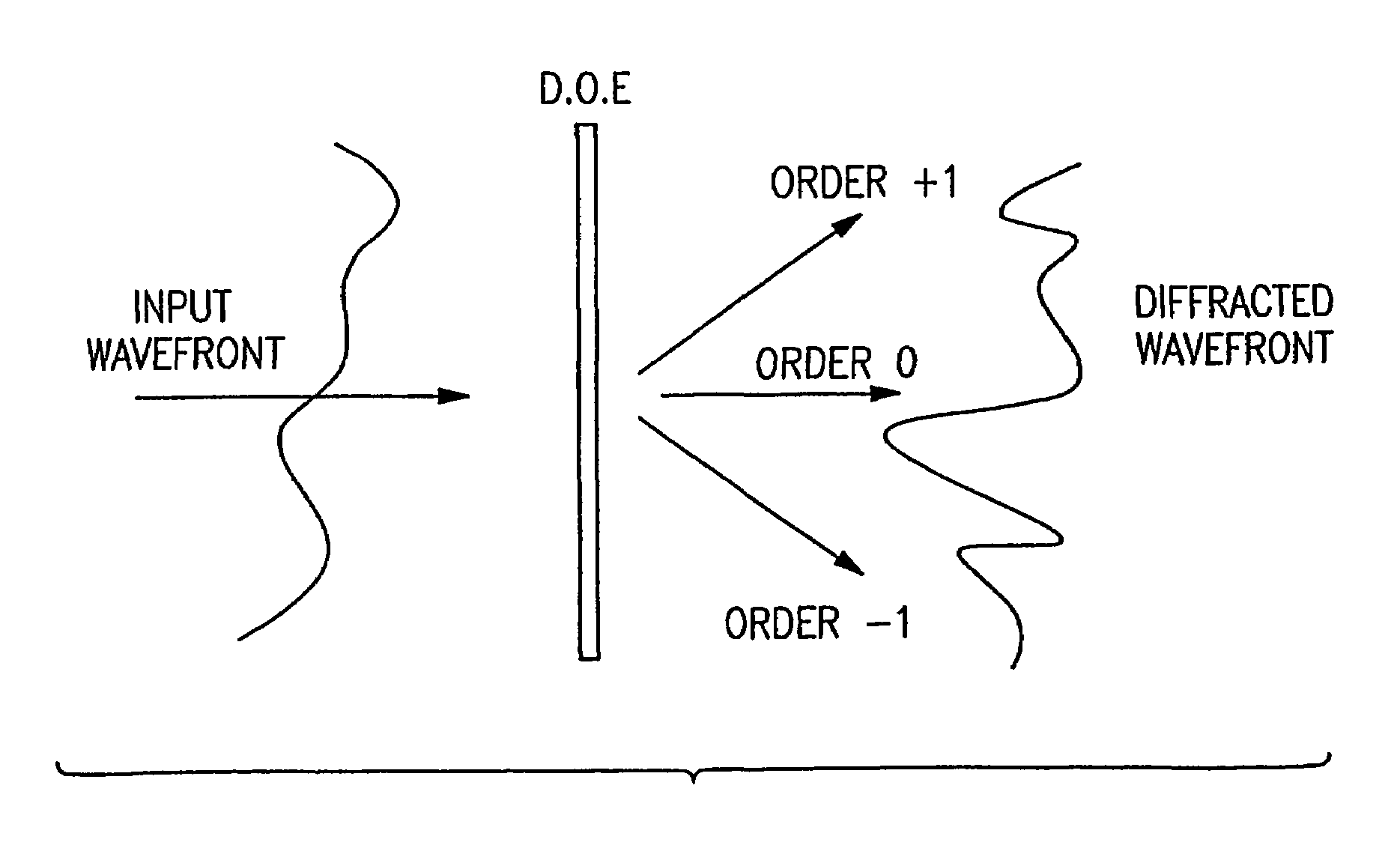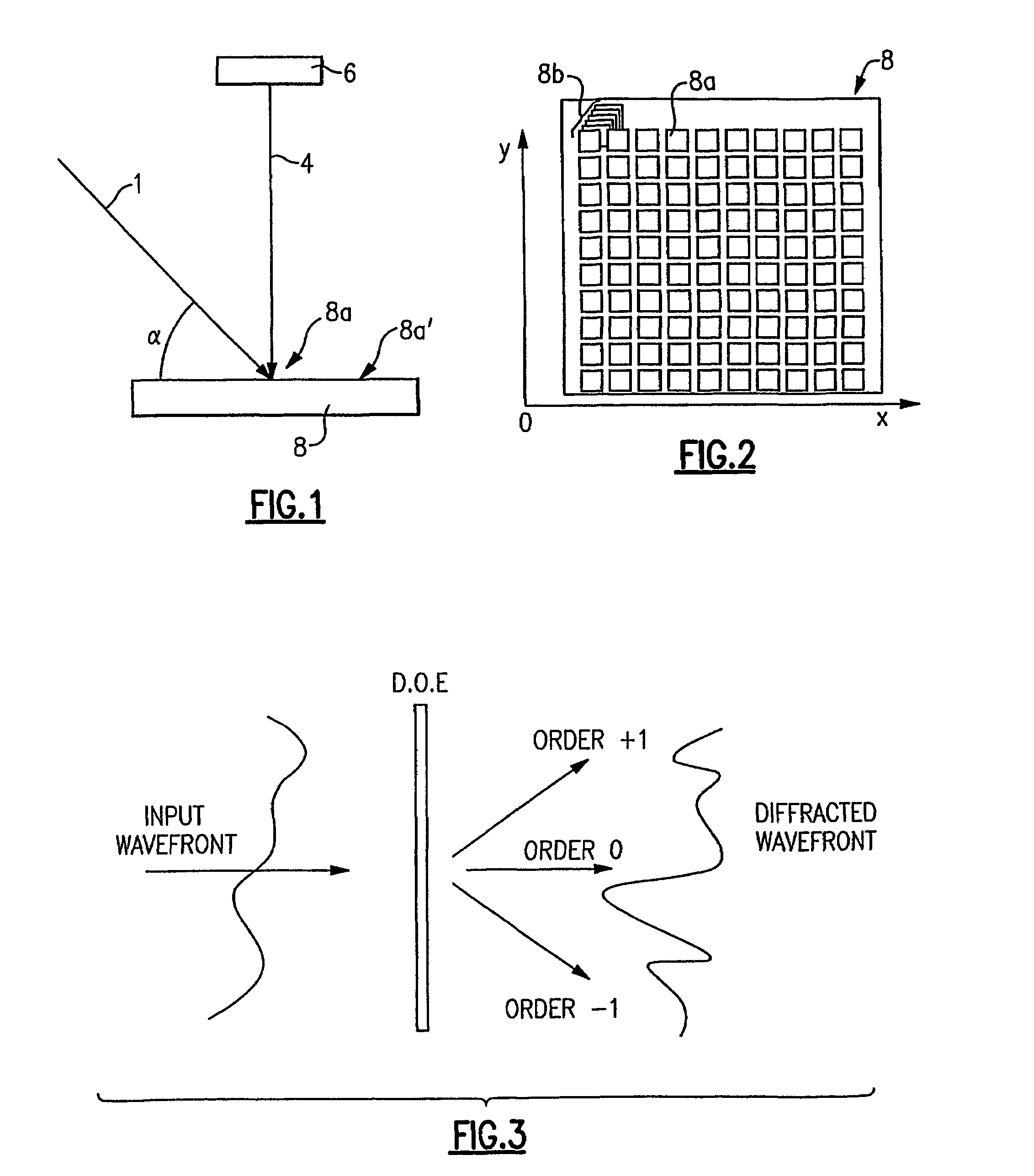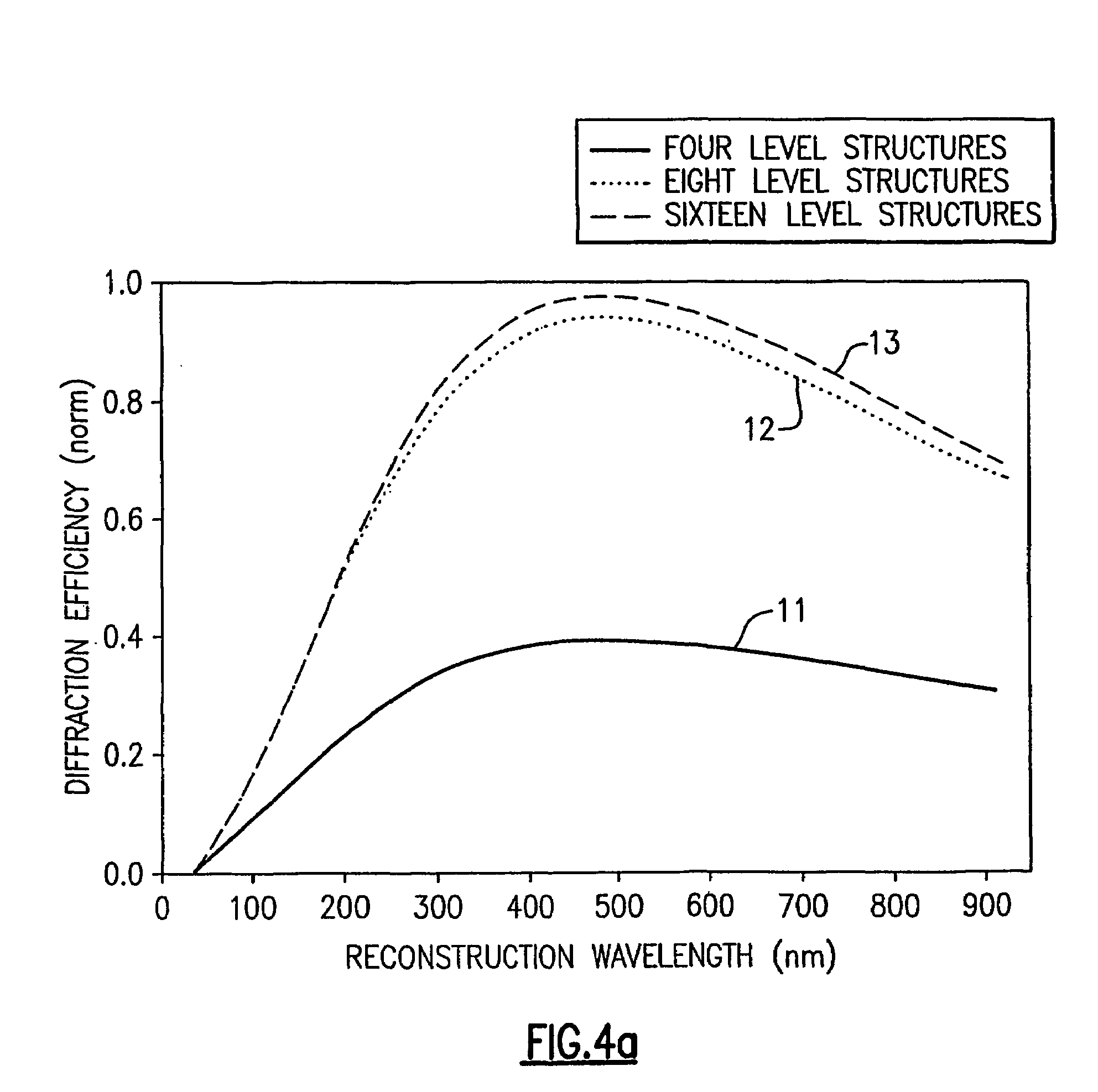Dynamic solid state diffractive optics applied for reading a diffractive optics memory
a technology of diffractive optics and dynamic solid state, applied in the field of diffractive optics memory, can solve the problems of slow addressing system of these previous devices, mechanical components of these previous devices need frequent maintenance to correct errors and dysfunction, and place a limit on the ability to miniaturize these systems, etc., to achieve the effect of reducing cost, reducing maintenance costs, and fast access tim
- Summary
- Abstract
- Description
- Claims
- Application Information
AI Technical Summary
Benefits of technology
Problems solved by technology
Method used
Image
Examples
Embodiment Construction
Recording Process
[0044]FIG. 1 shows a schematic of the important signals involved in recording a diffraction pattern, or alternately a hologram, in a storage medium using angular and spatial multiplexing. Various diffractive recording processes have been developed in the art and further details can be found in the book Holographic Data Storage, Springer (2000) edited by H. J. Coufal, D. Psaltis, and G. T. Sincerbox. In this specification, the term “diffractive” is used throughout to differentiate prior art holographic technology used for 3-D image generation from diffractive technology necessary for the generation of a storage medium. For example, diffraction efficiency is critical to the viability of any material to be used as a diffractive storage medium. The quality of interference constituting a 3D-hologram is simple to achieve compared to the quality required to realize a storage medium. Moreover, a storage diffractive pattern can also be implemented by using other techniques t...
PUM
| Property | Measurement | Unit |
|---|---|---|
| angle | aaaaa | aaaaa |
| geometrical distance | aaaaa | aaaaa |
| size | aaaaa | aaaaa |
Abstract
Description
Claims
Application Information
 Login to View More
Login to View More - R&D
- Intellectual Property
- Life Sciences
- Materials
- Tech Scout
- Unparalleled Data Quality
- Higher Quality Content
- 60% Fewer Hallucinations
Browse by: Latest US Patents, China's latest patents, Technical Efficacy Thesaurus, Application Domain, Technology Topic, Popular Technical Reports.
© 2025 PatSnap. All rights reserved.Legal|Privacy policy|Modern Slavery Act Transparency Statement|Sitemap|About US| Contact US: help@patsnap.com



